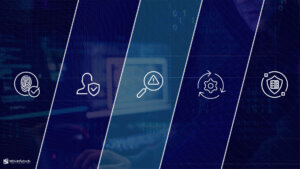Nowadays, malicious actors use various tools to break into systems. But old-school cybercrime tools are still causing problems for many Australians.
In the first half of 2023, between January and June, 21 out of 23 reported data breaches affecting over 5,000 Australians were attributed to various cyber incidents. These incidents included 7 ransomware attacks, 7 cases of compromised or stolen credentials (with the method undisclosed), 4 hacking incidents, and 1 each involving a brute-force attack, malware, and phishing through compromised credentials.
Similarly, in 2022, there were 64 reported data breaches affecting more than 5,000 Australians, with 3 of them linked to malware. While these numbers might appear small at first glance, it’s essential to remember that each incident impacted over 5,000 individuals. This fact alone should raise concerns, highlighting the importance of raising awareness, providing training, and practicing good cyber hygiene to prevent such cyber threats.
3 Types of Cybercriminal Tools Common Online
Malware is short for malicious software. These are malicious applications or code that can damage a device’s operation. Cybercriminals can use malware for their own financial gain by getting banking details, collecting and selling information. These programs can also gain access to private computer systems. Here are the common types of malware
Spyware and Adware
Spyware and adware are like digital spies that infiltrate your device without your consent. They often sneak in when you visit untrustworthy websites or open suspicious attachments. Here’s what you should be aware of:
Silent Infiltration: Spyware and adware can silently download onto your device, lurking in the background.
Unwanted Actions: These programs can make your computer do things you don’t want, such as displaying unwanted advertisements.
Privacy Invasion: In the worst cases, spyware can track your online activities, steal your passwords, and compromise your accounts.
Viruses
Viruses are malicious programs that spread from one device to another, causing chaos along the way. They are more aggressive than typical malware. Key points to remember about viruses:
Various Strains: There’s a wide range of computer viruses, each designed to infect and spread in unique ways.
Unauthorized Access: Viruses are typically created to grant cybercriminals access to infected devices.
Propagation: They propagate themselves through various means, infecting as many devices as possible.
Botnets
Botnets are networks of compromised computers, orchestrated by cybercriminals remotely. They can serve multiple purposes, often for financial gain or launching attacks. Here’s what you should know about botnets:
Invisible Infection: Your computer can be part of a botnet without your knowledge until it’s too late.
Remote Control: Cybercriminals control botnets from anywhere in the world, issuing instructions to infected devices.
Data Harvesting: Botnets often harvest sensitive data like passwords, personal information, and credit card numbers.
Neighborhood of Criminals: This information is then used for identity theft, credit card fraud, spam, website attacks, and even distributing more malware.






